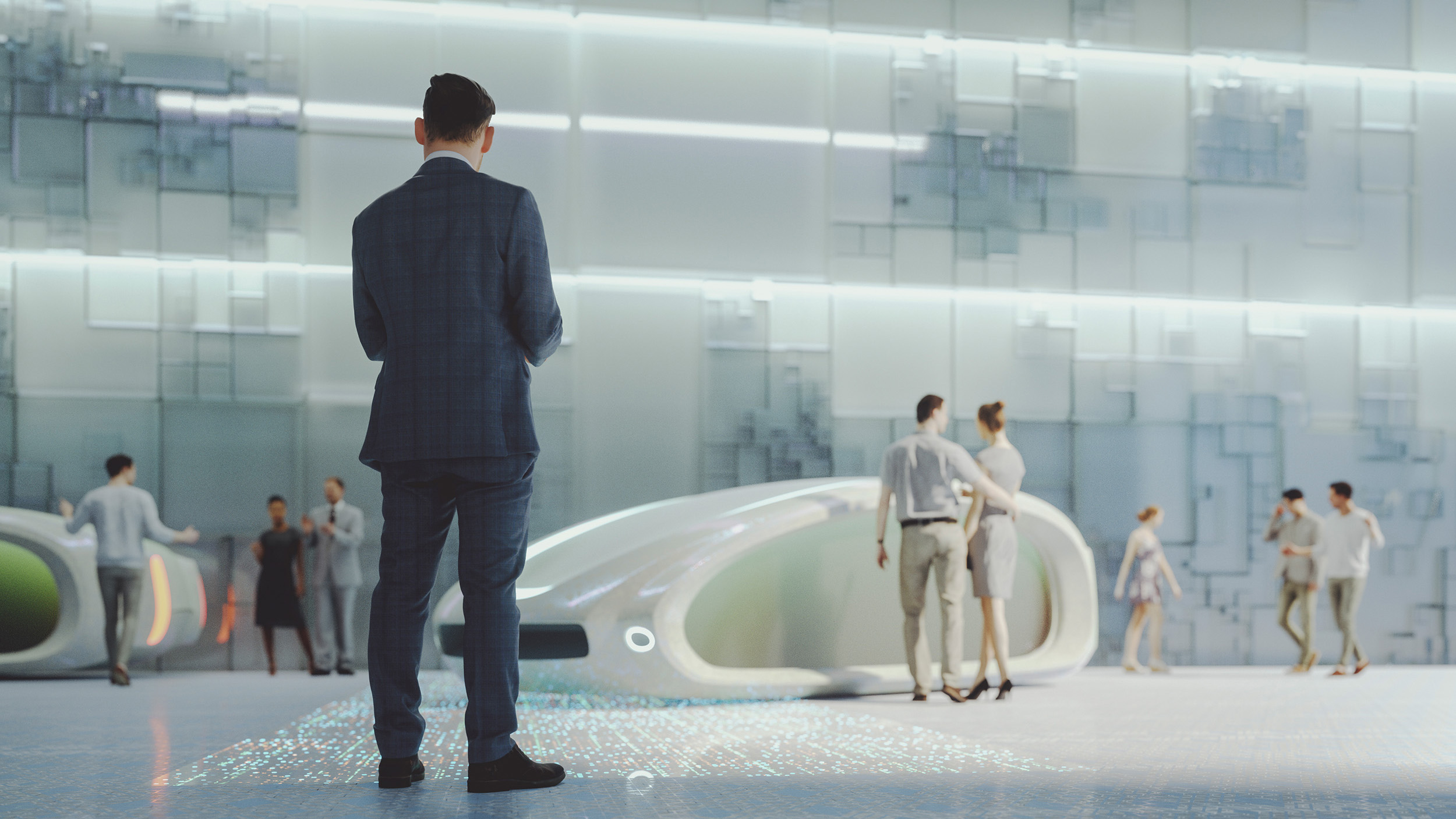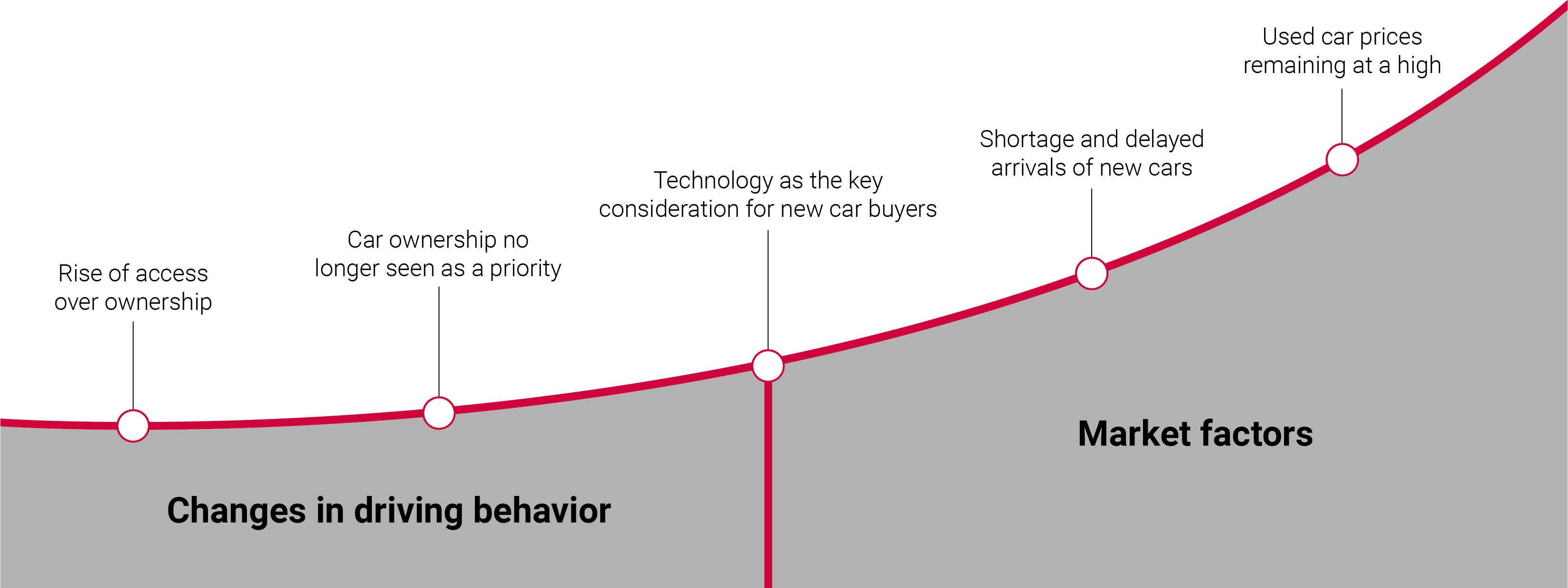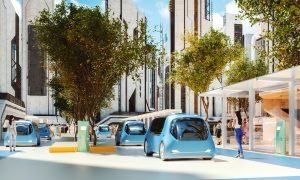
Subscription models: A practical move for both customers and retailers

by Robert M. Häusler, Director New Retail Model and Electric Vehicle (EV) Strategy
Many governments are starting to withdraw schemes that offer cash back and incentives towards the purchase of EVs, ultimately driving up the overall cost of a new EV higher than ever. Meanwhile, attitudes towards mobility and vehicle ownership are changing dramatically and fewer drivers are opting to buy a vehicle in the traditional way putting pressure on OEMs’ sales targets. These two drivers are forcing manufacturers to consider alternative payment functions or selling incentives for consumers.
Largely influenced by other lifestyle services, it is no surprise that the ‘pay-as-you-go’ mindset is moving into the automotive space and consumers are looking for options to access a vehicle only when it’s needed. However, despite the generational differences, a large percentage of people surveyed said they weren’t even aware of mobility subscription models or what they meant for the customer, and that the younger generation aren’t as open to these new mobility models as we’d expect.
The option to subscribe to a vehicle itself or its in-car features gives the driver the flexibility to change its specification as and when they need to. It also lowers the overall cost of ownership and allows for vehicles to be personalized at the point of resale. But to overcome the apparent apprehension around these new services, brands must ensure their subscription services continue to offer the same level of freedom to the customer as having your own car whilst avoiding the associated commitment and excessive cost of car ownership. Some OEMs are already demonstrating this added convenience offering additional benefits and services to new car subscribers by integrating in-car movies, office services, intelligent high beam technology and automated navigation, for example.
“The subcription model could achieve a market share of up to 40% by 2023.”
Ferdinand Dudenhöffer, CAR Institute Germany
Affecting the used car market
Innovative technologies, in-car connectivity and battery costs are driving up the price of a new EV. In the current climate, most drivers buy or lease vehicles, selecting their preferred pre-installed features at the point of purchase. These features are then sold as standard with the vehicle once it enters the used car market. These factors not only put a much higher price point on the vehicle at the point of repurchase, but when combined with the unknown anxieties around buying a used EV, such as battery health and the inability to configure the vehicle to your own specification, many consumers might opt for a new vehicle instead. In the end, the number of surplus used vehicles in the industry could rise exponentially.
These problems will certainly affect the market within the next five to six years if they’re not addressed by manufacturers now.
Personalize your driving experience
New vehicles sold with in-car subscription models not only offer customers access to a vehicle at a lower price but, when regarded as a digital product, can be retrofitted and upgraded throughout its lifecycle, be it through software downloads of over the air updates. It’s not a fixed product but one that first-time customers and future owners can customize to their needs, offering the same configuration options expected with new car sales at the point of repurchase.
This can make electric vehicles (EVs), which don’t depreciate in value once they enter the used car market in the same way that ICE vehicles do, more affordable.
But one of the largest fears faced by drivers looking to purchase a used EV is battery health. To overcome this, many brands are turning to companies like NIO, with its extensive network of battery charging and battery swap facilities, to provide batteries for their vehicles. In doing so they manage the battery and chassis separately. This means the health of the battery in a used EV, along with the tailored specification of the in-car features and accessories will be transparently reflected in the subscription fee. The customer has much more reassurance around the battery health and more control over their used vehicle, opting to increase range if needed for a long trip to removing features like heated seats in the summer months, or even activating children’s entertainment features that allow gaming in the back seats while travelling for vacation.
But this will generate some complications for leasing companies who will have to confirm the price of the vehicle chassis, battery and accessories separately at the end of the lease term.
The customer of the future
Consumers are starting to experience the next generation of online shopping. Immersive, virtual interfaces have reinvented the e-commerce experience, replacing the traditional online platform with visual, interactive, social and highly engaging content. This ‘Metaverse shopping’ and the acquisition of NFTs has set expectations, especially in the younger generations, around what it means to ‘own’ something. Older generations generally have more fixed behaviors around ownership and are more likely to engage with a physical product in the traditional way, taking something home they have paid for. But this reinvented retail experience satisfies the younger consumer whose mindset is attuned to accept more unconventional virtual methods of ownership.

And it’s this younger generation which is integral to the transformation of the used car market. By thinking about mobility in the non-traditional way and adopting mobility services on a subscription basis from the outset, more and more used cars in the future will have the ability to be personalized every time they change hands.
The introduction of subscription models also presents new retail opportunities for brands to transform the way consumers adopt these services. Rather than visiting a dealership or visiting the website in the traditional sense, brand apps and virtual platforms allow the driver to order a vehicle for use and tailor the specification to their own personal needs on the go. Vehicles can then either be collected from a depot or for even more convenience, delivered to the driver at home.
Transform your business model
Subscription-based business models are ultimately preparing manufacturers for the potential issues expected in the used EV market in the next five or six years. With many manufacturers planning a fully electric line up in the foreseeable future, OEMs and leasing companies should invest today to safeguard their future used car business. While the standardized production costs of an EV are much lower, the reduction in parts and service requirements will significantly affect the OEM’s profits. Monthly subscription fees paid by the customer will, in future, cover manufacturing costs of the vehicle allowing the OEM to generate profits through additional digital business. Cars will no longer be individually manufactured for first-time customers. Instead, each will be built to the same specification, and it becomes the customer’s choice whether to activate certain features or not.
A new opportunity could then be created for a manufacturer to become the linchpin of the data and service business and achieve market values like other internet giants. We can help introduce subscription-based business models across the organization as well to help increase the customer acceptance of subscription models in the market for both new and used vehicles.
About the Author:
Robert M. Häusler
Director New Retail Model and Electric Vehicle (EV) Strategy
Robert M. Häusler joined MSX International in early 2022 as Director New Retail Model and Electric Vehicle (EV) Strategy. His responsibilities include leading the company’s electric vehicle and new retail expansion into Europe, establishing the new electric performance portfolio, driving sales and revenue and delivering outstanding customer experience. Prior to joining MSX, Robert gained a wealth of consultancy experience within the automotive sector in senior management roles within premium OEMs. Robert is based in Munich, Germany, and can be reached at rhaeusler@msxi.com.






